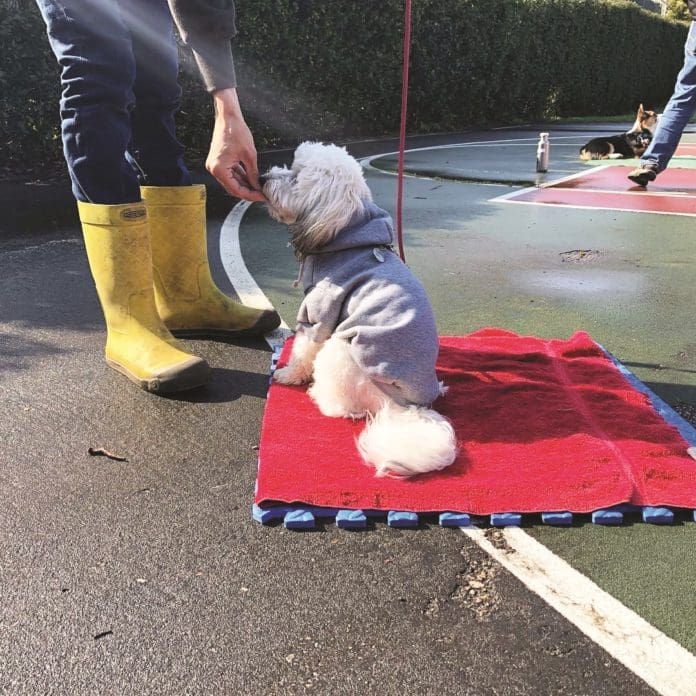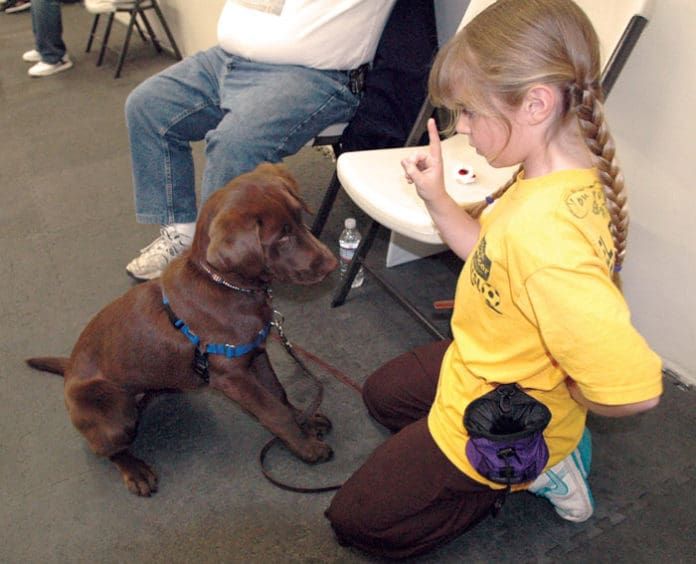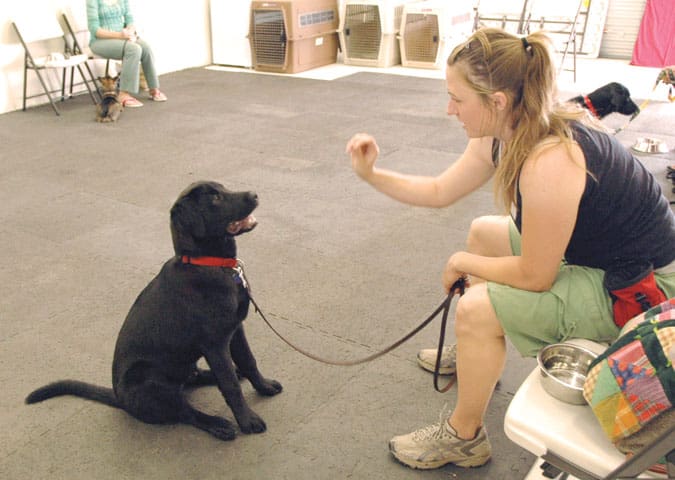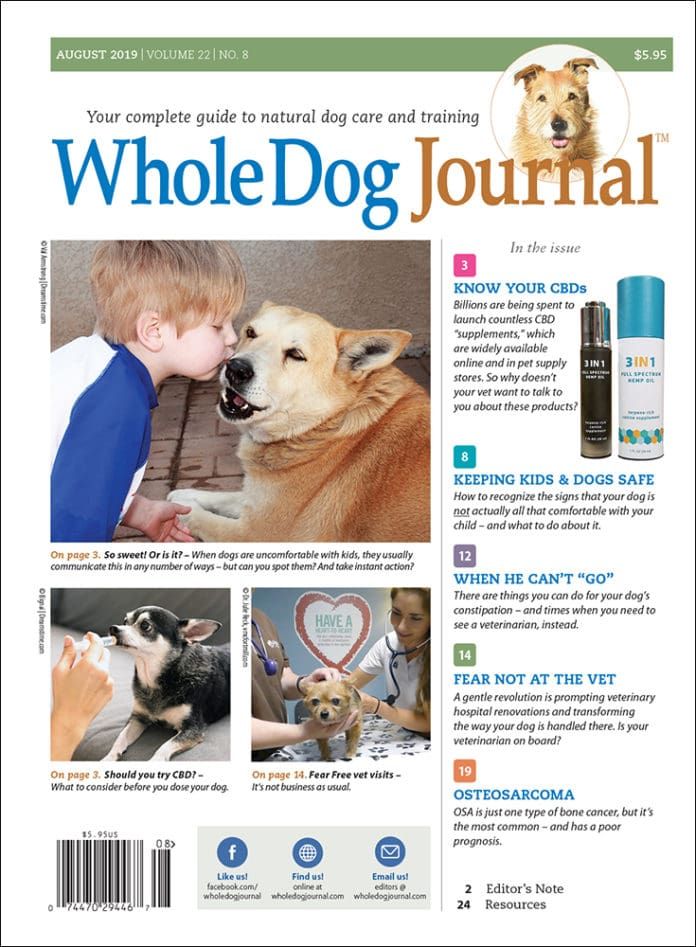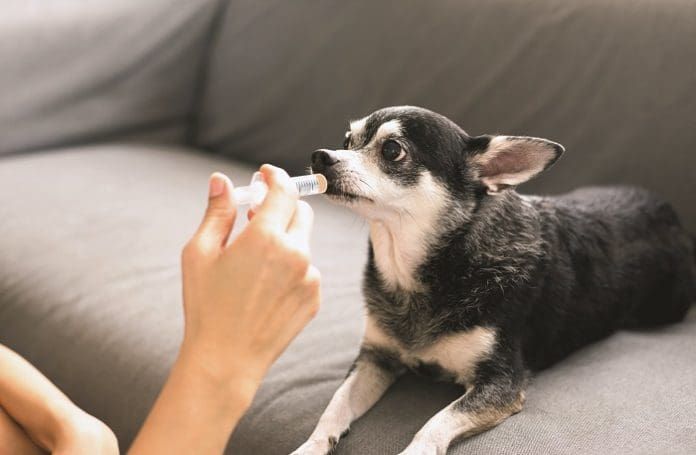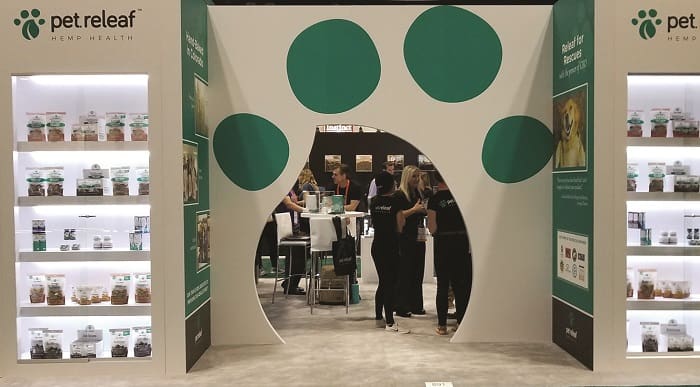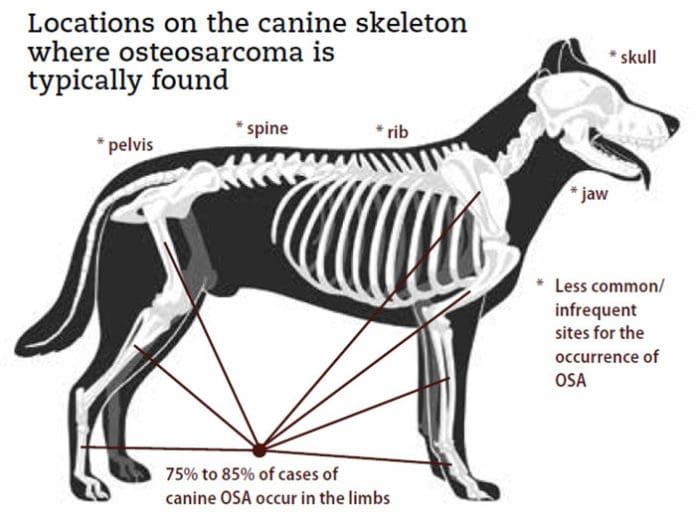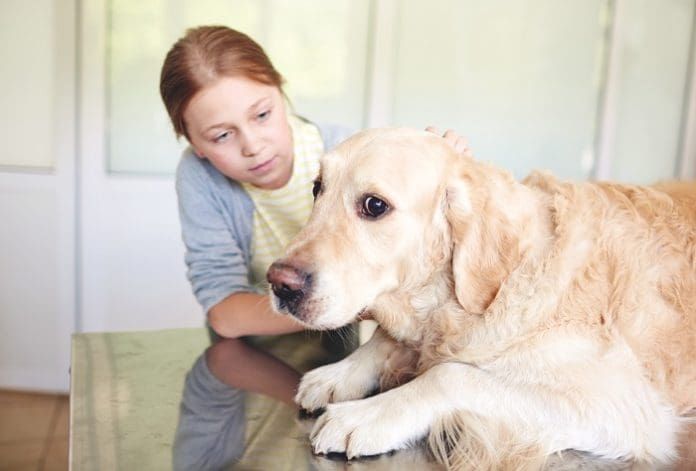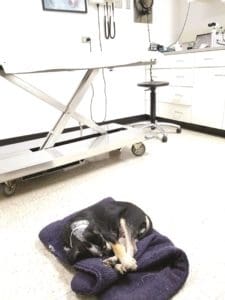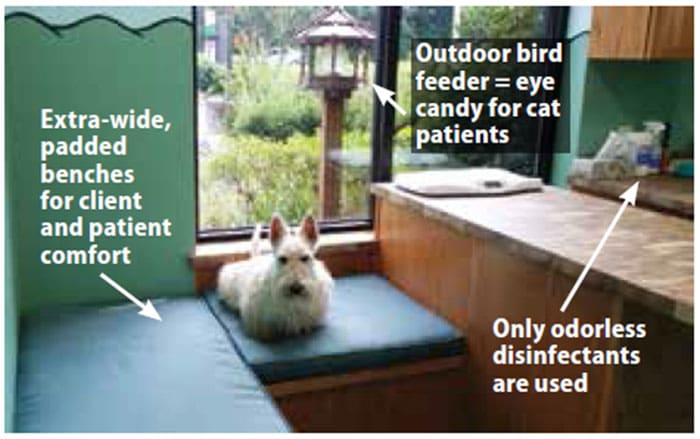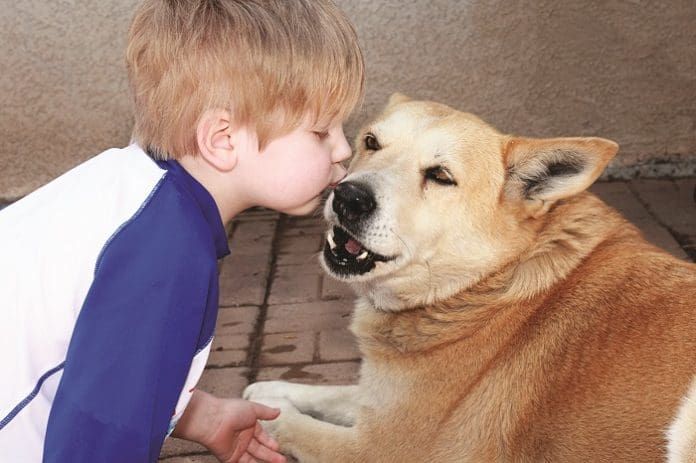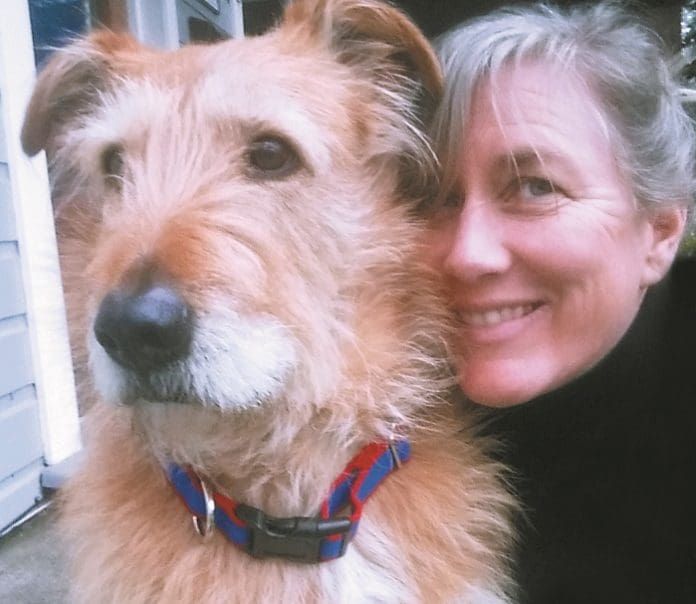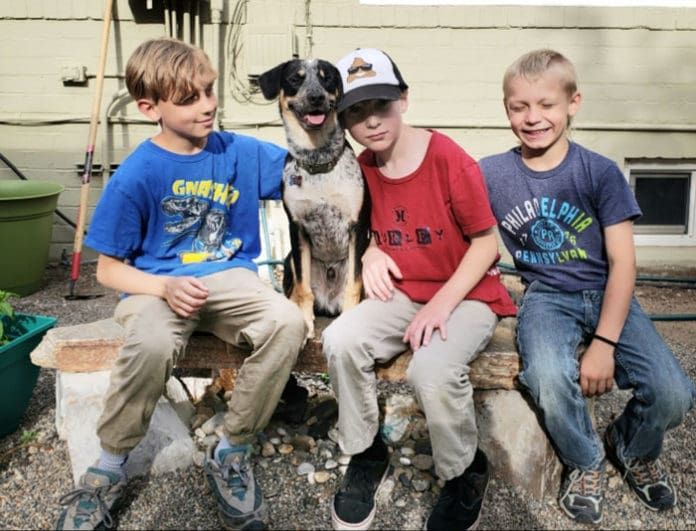When Orbit came into one of the classes I offer for puppies and their owners, in Santa Cruz, California, he was in most ways just like all of the other puppies. He bounced around excitedly, wanted to sniff the other pups, and was thrilled with the treat tidbits that were offered for certain behaviors. But Orbit did one thing just a little differently. He would make tight circles near his people, Melissa and Arielle, gradually spiraling outward.
Orbit, a Havanese-mix who was born blind, couldn’t visually scan his surroundings. Instead of sight, Orbit was using cognitive mapping, sounds, and scent to figure out what was going on in his immediate environment. Like many animals, dogs possess the ability to develop a mental map of their surroundings, even when they cannot see. Through exploration of the space, they learn where things are and how to navigate safely.
Orbit was born without sight due to retinal dysplasia and optic nerve coloboma. Dogs who are born blind may have a genetic component or may have developed the problem while in the womb. Dogs can also lose their sight later in life due to genetic conditions, diseases, injuries, and other changes in the eye as they get older. Some of the more common causes of vision issues include cataracts, glaucoma, progressive retinal atrophy, and suddenly acquired retinal degeneration (SARDS).

Dogs = Dogs, Sighted or Not
There is a belief that blind dogs will be more prone to behavior problems. But this really is a myth. Blind dogs are dogs first, and blind second. Some are happy, some are serious. Some are easy going, some are more easily stressed. Some like to play, others prefer to cuddle. Many love their walks, car rides, hanging out with friends, and a good chew.
Pups who are born blind may have an easier time because they do not have to adjust to a change. Being blind is their norm. A dog who becomes blind later in life may need some time and help with the adjustment, but most dogs who are blind adapt well, perhaps in part because they already rely heavily on other senses.
“Orbit is a happy-go-lucky guy,” says Melissa. “He is trusting and approaches life with gusto.” Melissa said that her family’s first consideration when thinking of adopting Orbit was whether they were really ready for a puppy. Their second consideration was how would having a blind pup be different from having a sighted pup.
“What would a blind puppy need that a sighted puppy might not need? What would be different? Could we keep him safe?” Melissa says that in some ways he’s actually been easier than the pups she’s had in foster care. For example, he doesn’t get into stuff as much as other puppies, maybe because he can’t see the things to get into. But in other ways, they have had to think differently.
What’s different?
One of the big differences has been in their awareness of ambient noise. Orbit uses his hearing to orient himself in new environments and to keep track of Melissa. For example, Melissa wears keys on her belt that jingle, giving him a sound to orient to as they move through life. If there is traffic noise, he may have a harder time following her footsteps or the jingle of the keys.
Melissa recalls going to new locations to socialize Orbit – a friend’s backyard and a downtown shopping area. What Melissa considered to be a normal amount of noise – such as dogs barking in the background or cars going by on the street nearby – was a symphony of sound for Orbit. The sounds created an environment that was disorienting and overwhelming.
“We learned that we have to take him out in gradients. Slowly increasing the challenges. But he likes going places. He is very friendly, social, and gregarious. I think he would be sad if he wasn’t allowed to go out and embrace life the way he does. You just have to modify it a bit.” Melissa notes that Orbit will usually have a new place mapped and be comfortable within three or four visits.

Socializing Orbit with other dogs has also been a little different. He will not see the other dog’s social cues. And when he attempts to give cues, they may be a little awkward. “He does some of the right things, but in the wrong way,” Melissa says. For example, he may do play bows facing away from the other dog or walk up to sniff a dog and instead bump into their side. Dogs he interacts with have to be patient and unflappable.
Physical safety is another big concern. For example, the family has guards on their stairs and baby gates to prevent accidents. When walking down the street, Melissa has to be very aware of things that Orbit could run into, such as bushes or poles.
Training Modifications for Blind Dogs
When using methods such as lure and reward or reward-marker (clicker) training, teaching a blind dog is remarkably similar to working with a sighted dog, though you may obviously rely more heavily on verbal cues (or touch cues for dogs that are both deaf and blind) than on hand signals or body language.
- A new behavior may be initially lured, captured, or shaped. For example, you might use a treat lure to prompt a “sit.” You can capture the dog orienting to a sound such as the dog’s name or a touch such as a shoulder tap. These can be introduced much the same way you might introduce them to a sighted dog.
- Using a reward marker, such as a clicker or the word “yes,” to let the dog know what behavior is being rewarded already relies on sound rather than sight. For a dog that is both deaf and blind, a specific signal such as a touch on the chest can be used for the reward marker.
- You can reinforce behaviors with food, praise, touch, play, or other things that the dog finds rewarding, just as you would with a sighted dog.
Training is similar enough that Orbit attended my puppy, beginning life skills, and intermediate life skills classes and excelled at all of the exercises with only a few minor modifications.
In puppy class, where the pups interacted with each other, we made sure that approaches were done slowly and carefully (something that is really a good idea for all pups!). When teaching impulse-control behaviors such as stay and leave it, we quickly discovered that adding a verbal cue immediately (rather than waiting until we had the finished behavior) actually accelerated the training, as he couldn’t respond to the initial body language cues.

With a blind dog, using multiple cues (which goes against conventional training advice) can be very helpful for certain behaviors, notably orienting skills such as attention and recall. Melissa will call Orbit repeatedly when he is at a distance so that he can follow the sound of her voice to find her.
While most of us strive to have our dogs walk on a leash while the leash is loose, with Orbit, Melissa uses gentle tension on the leash to help him navigate around objects. She trained him to follow the leash pressure.
In addition, when training a blind dog, you might consider teaching some cues that you might not need with a sighted dog. Here are a few examples:
- Careful. “Careful!” can be used to let a dog know if there is something in front of him. This can be helpful in new environments or if there is something that has changed in an environment that the pup has already mapped. While there are several ways to train a dog to stop in motion, one simple way with a blind dog is to use a physical prompt.
Have your dog on a leash next to you. Walk forward with your dog toward an object such as a piece of furniture. Say, “Careful!” and then with either gentle pressure on the leash or your hand on your dog’s chest, stop his forward motion. Click and reward the stop. Then pat the item in front of your dog so that he will walk toward it and investigate. With repetition, your dog will soon understand that the cue “Careful!” means slow down or stop and look for something in front of him.
[post-sticky note-id=’377221′]
- Go see. This cue can be used to help a dog know there is someone or something in front of him that is safe to check out. You might start this with a friend. Walk your dog toward the friend, say, “Go see!,” and then your friend will encourage your dog to come closer to say hello.
Another easy way to train it is to have a small box or platform in front of your dog. Place one or more treats on the platform. Say, “Go see!,” and then encourage your dog to go up and explore the box. Within a few repetitions, most dogs will get the idea that “Go see!” means there is something in front of them that is interesting and safe to explore.
- Step up and step down. Using a single small step, a curb, or a training platform, encourage your pup to explore going up and down, on and off the step. Using treats to prompt or lure your dog may be helpful. When your dog is happily going up and down on the step, you can click and treat each time he offers the behavior.
Once he is predictably going up and down, you can add the cue just before he does the behavior. Say, “Step up!” just before he goes up, then click and treat. Say, “Step down!” just before he goes down, then click and treat.
Practice in a few locations with different steps. Once he understands it in several locations, you can practice with two or more steps, eventually adding the cue “Stairs!” to mean there are multiple steps in front of you.
- Run (or Go). This is a good cue to let your dog know that he is safe to run, and may be an especially important cue for a young or high-energy dog. You can practice this in your yard or another safe open area. Just before releasing your dog to run, say the word “Go!” or “Run!” Your dog will soon learn to associate the word with a wide-open space, free of obstacles and dangers.
- Names of things. You might consider teaching a blind dog the names of things such as specific pieces of furniture, toys, people, or other animals. While this is something that many people also do with sighted dogs, many of us rely more on pointing, patting, looking, and other body-language cues.
Teaching the name of a person, animal, or item is a simple matter of creating an association. For example, to teach the name of a person, you might say the person’s name, then that person can talk to the dog in a happy voice. Repeated pairings and the dog will likely hear the person’s name and check to see if that person is nearby.
With items, you can start with pairing the name in everyday occurrences. Say, “Squeaky!” before playing with a specific squeaky toy, and soon your pup may associate the word with that particular item or action.
Living a Full Life

Blind dogs, like all dogs, can live full, active lives. With a little modification, blind dogs can participate in many of the same activities sighted dogs enjoy. Dogs who have lost their sight later in life may enjoy similar activities as before losing their sight. For example, a dog who enjoys retrieve games may still enjoy fetch, finding their toys by sound and smell. Scented toys and toys that make noises may be particularly attractive for a blind dog.
Scent discrimination games are also a great option for blind dogs. From casual “Find the treat!” games in your living room, to hide and seek in the garden, to formal or competitive K9 Nose Work, scenting activities can enhance a blind dog’s life by encouraging the use of another sense.
Many blind dogs also enjoy adventures outside of the home. Orbit has gone to training classes, travels with Melissa through her day-to-day life, and even goes to work with her. “I would encourage people not to limit their blind dog’s life,” Melissa says. “Orbit loves being out, visiting with people, and going on a ‘sniffari.’”


